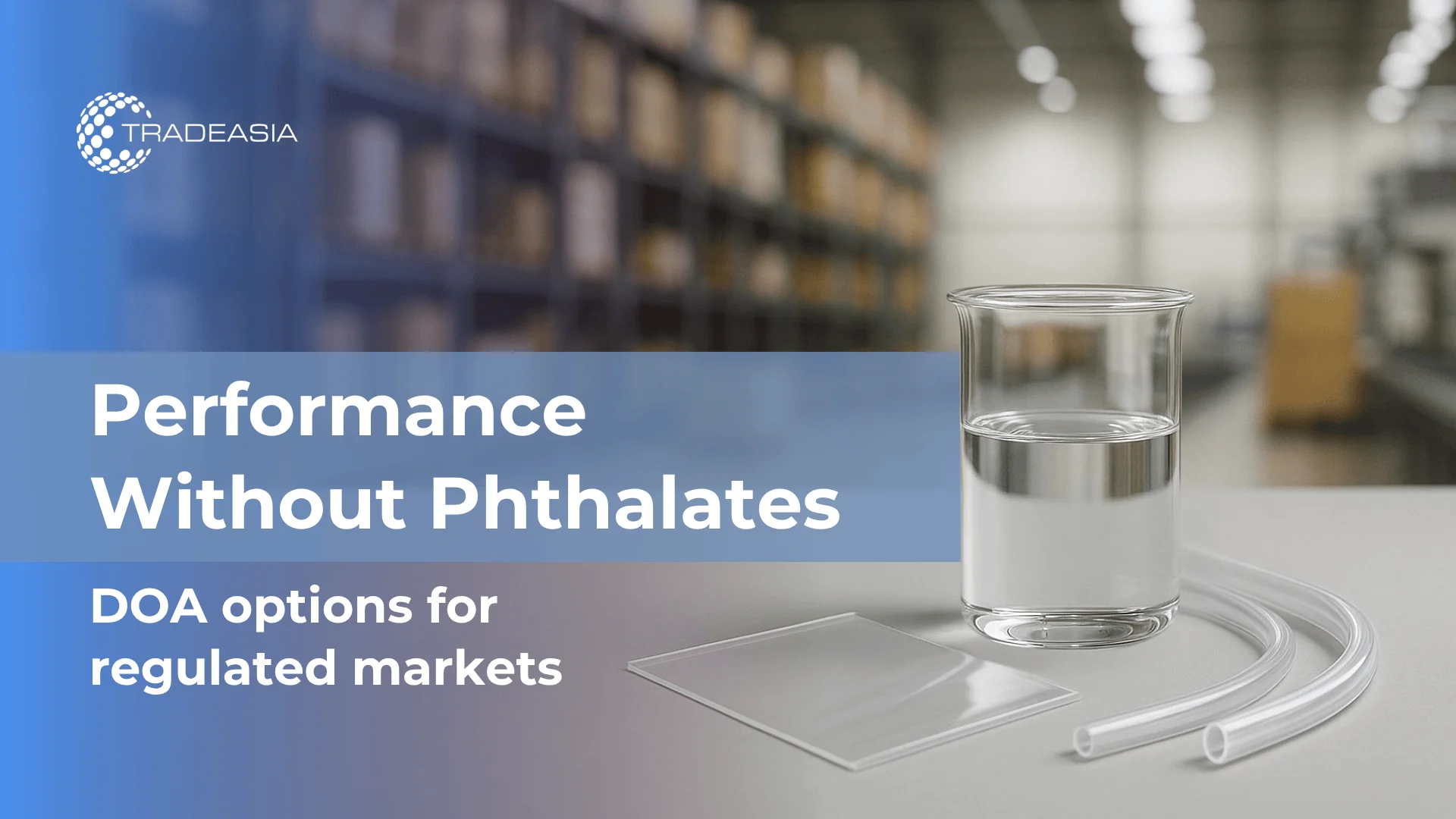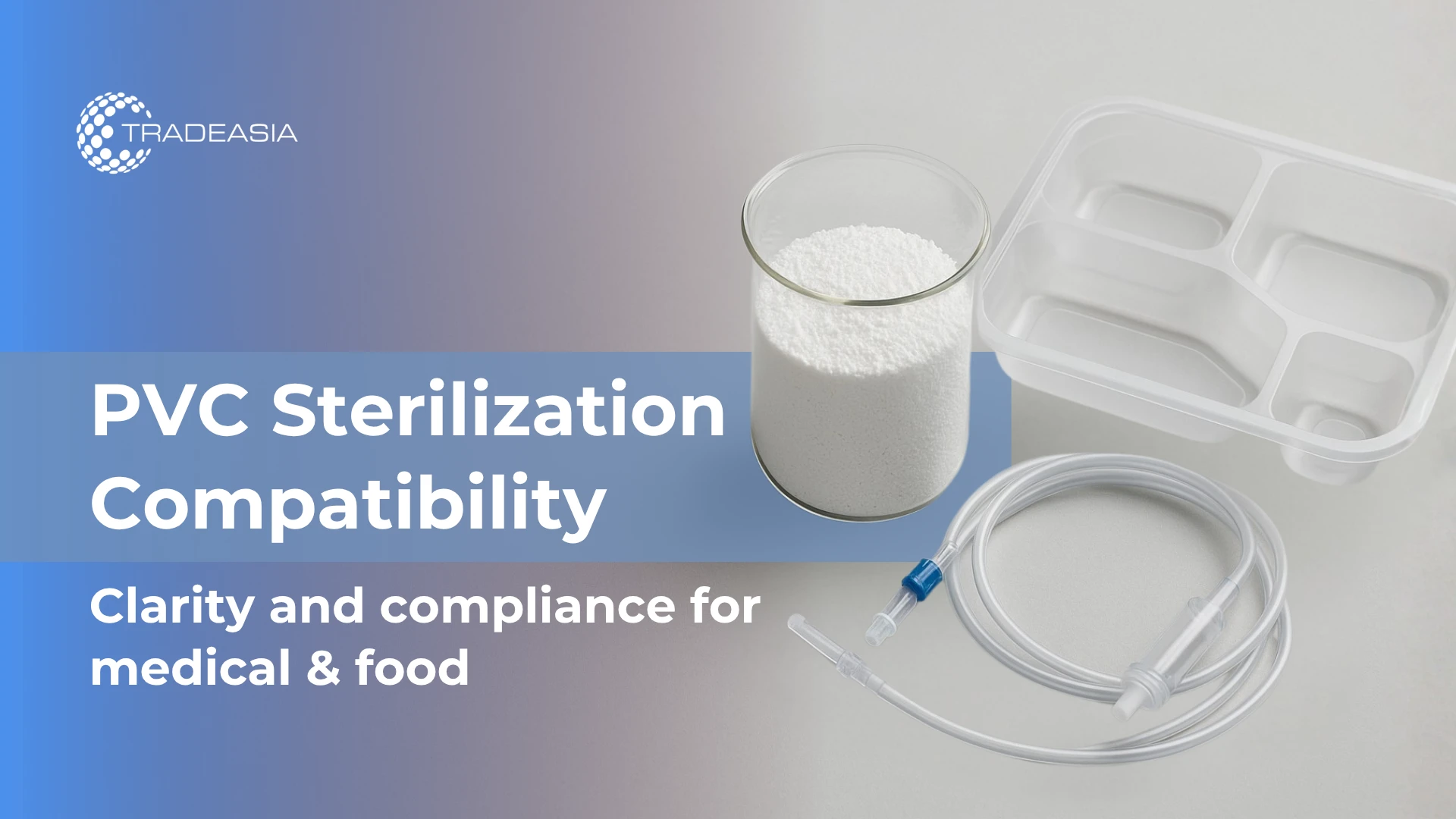1. Introduction: Why DOA Is Back in Buyer Conversations
Buyer teams in the DOA industry are revisiting non-phthalate plasticizers as food-contact stakeholders reassess additive choices. The FDA has reiterated actions around certain phthalates in food-contact applications, prompting renewed interest in alternatives, including dioctyl adipate (DOA) for flexible PVC. The net effect is not a blanket ban but a re-focusing on which materials remain authorized and documented for intended uses—an opening for informed DOA suppliers to add value with paperwork and predictable performance. See FDA’s phthalate update page for context: https://www.fda.gov/food/hfp-constituent-updates/fda-update-phthalates-food-packaging-and-food-contact-applications.
For industrial buyers, the question is practical: where can DOA help you hit flexibility and low-temperature performance targets while keeping migration and odor in check? That answer depends on application, film or tubing design, and test methods referenced in your quality gates. Market commentary confirms that FDA’s 2022 rulemaking (affirmed in later updates) removed authorizations for many phthalate plasticizers based on industry abandonment, not an across-the-board toxicology re-classification. Summaries: DLA Piper and PackagingLaw coverage. https://www.dlapiper.com/en/insights/publications/2024/11/fda-responds-to-objections-over-phthalates-in-food-packaging ; https://www.packaginglaw.com/news/fda-reaffirms-final-rule-phthalates-and-denies-request-public-hearing.
2. What FDA Actually Changed—and What It Didn’t
In 2022, FDA finalized a rule removing authorizations for numerous phthalate plasticizers in food-contact uses because industry had already abandoned them; in 2024, FDA evaluated objections and reaffirmed that outcome. This means those specific uses no longer appear as authorized, but it does not automatically de-authorize every phthalate nor does it newly authorize any replacement.
FDA also indicated it is working on an updated safety assessment for remaining authorized uses, while noting that many of the petitioned phthalates are no longer in use. This nuance matters to procurement: your acceptance criteria should reflect current authorizations by use and condition, not generic material names.
In Europe, EFSA continues work on prioritization and exposure protocols for phthalates and related plasticizers in FCMs. While not binding in the U.S., the EFSA narrative influences global brand policies and can shape requests in tenders. EFSA topic hub and 2022 opinion/protocol: https://www.efsa.europa.eu/en/topics/topic/food-contact-materials ; https://www.efsa.europa.eu/en/efsajournal/pub/7231.
3. Where DOA (Dioctyl Adipate) Fits in Food-Contact Use
Dioctyl adipate (DOA) is a non-phthalate adipate plasticizer valued for low-temperature flexibility and good compatibility with PVC. From a regulatory standpoint, buyers should confirm whether the intended use aligns with a specific 21 CFR provision or Food Contact Notification. Use FDA’s Inventory page for DOA (CAS 123-79-5) as a starting reference and then verify application-level conditions.
Performance-wise, DOA often supports clarity and cold-flex in films, gaskets, and some tubing applications, while balancing volatility and migration. Because migration is influenced by food type, thickness, and processing temperature, you should match laboratory data (overall/specific migration, organoleptics) to the actual use scenario rather than rely on generic claims.
In tenders, DOA is commonly compared to DOTP (terephthalate) and legacy DOP (phthalate). Your acceptance decision should also cover odor, color stability, and plate-out behavior at target processing temperatures.
4. DOA vs DOTP vs DOP: Performance & Compliance Positioning
DOA: excellent low-temperature flexibility and film clarity; good option for applications needing cold-flex and plasticizer permanence balanced with processability. Compliance hinges on mapping to the right CFR/FCN for the specific article and use conditions.
DOTP (Dioctyl Terephthalate): widely used non-phthalate for general-purpose flexibility with favorable volatility and migration profiles; often preferred where higher temperature resistance is needed vs adipates. Evaluate its food-contact suitability for your exact use case and document via supplier DoC and COA.
DOP (Dioctyl Phthalate): a legacy phthalate with extensive historical data but a shrinking food-contact footprint due to policy pressure and market perception. FDA’s recent actions targeted many phthalate authorizations based on abandonment; this does not equate to universal bans but does shift buyer expectations—consult the FDA update and legal analyses when communicating with brand owners.
Strategically, keep at least two qualified options (e.g., DOA + DOTP) to navigate supply constraints and performance nuances. Store comparative trials, migration data, and odor panels in a shared repository so commercial and QA teams answer brand audits quickly.
5. Documentation to Ask Suppliers (COA, DoC, Methods)
Request COA per lot covering key attributes (acid value, ester content, color, moisture, odor) and a Declaration of Compliance (DoC) that cites the relevant 21 CFR section/FCN and conditions of use (temperature, contact time, food type). Use the FDA’s eCFR and Inventory tools to verify citations. https://www.ecfr.gov/current/title-21 ; https://cfsanappsexternal.fda.gov/scripts/fdcc/?set=IndirectAdditives.
Ask for migration data aligned with your application (overall and specific), plus organoleptic assessments for taste/odor where relevant. Method families frequently referenced include ASTM standards for plastics and food-contact testing. For multi-market products, check whether EU documentation (e.g., alignment with EFSA’s evolving plasticizer work) is available; even when selling into the U.S., many brand owners request EU-style dossiers.
6. Supply, Multi-Sourcing & Risk Controls for the DOA Industry
A reliable DOA supplier should demonstrate upstream capacity coverage, alternative lanes, and historical OTIF metrics. When evaluating quotes, weigh logistics and inventory services as much as price; a low-cost offer without delivery assurance is a false economy for continuous operations.
Multi-source strategies are prudent while FDA scrutiny and brand expectations evolve. Qualify at least two supply points and lock down packaging specs, batch size norms, and anti-contamination protocols for tanker/IBC transfers. Keep retained samples and align on hold-release SOPs for lot acceptance.
Build traceability from incoming DOA to finished goods and log rework/regrind ratios for extrusions or calendering lines. This reduces dispute resolution time and strengthens customer confidence during audits, especially in food-adjacent uses where paperwork and cleanliness dominate buying decisions.
Use Plastradeasia's Contact Us channel to set up trials, samples, and stocking plans across multiple plants—and request current COAs/DoCs before first delivery: https://www.plastradeasia.com/en/contact-us.
7. Sustainability, Claims & Market Signaling
Some buyers explore narratives like “non-phthalate” or “recyclable structures.” Keep claims truthful and specific: non-phthalate says nothing about compostability or universal approval; recyclability depends on design-for-recycling and infrastructure, not the plasticizer alone. For EU technical backdrop on plasticizers, see EFSA’s materials hub. https://www.efsa.europa.eu/en/topics/topic/food-contact-materials European Food Safety Authority.
If customers ask about “class bans” or petitions, clarify FDA’s position to date: removal of many authorizations linked to abandonment, ongoing assessment of remaining uses, and denial of petitions to revoke all 28 ortho-phthalates. This helps calibrate risk without over- or under-stating regulatory realities. Summaries: DLA Piper; Food Packaging Forum.
https://www.dlapiper.com/en/insights/publications/2024/11/fda-responds-to-objections-over-phthalates-in-food-packaging ; https://foodpackagingforum.org/news/u-s-fda-reaffirms-decision-to-keep-authorization-of-certain-phthalates-for-food-contact-use
Where brand owners request recycled or mass-balance narratives, ensure your documentation distinguishes chain-of-custody certifications from toxicology authorizations. One does not replace the other; both may be requested in parallel during vendor approvals.
Signal maturity by publishing product landing pages and document hubs. For commercial evaluation alongside DOA, see Plastradeasia's pages: DOA — https://www.plastradeasia.com/en/dioctyl-adipate ; DOTP — https://www.plastradeasia.com/en/dioctyl-terephthalate-995-taiwan ; DOP — https://www.plastradeasia.com/en/dioctyl-phthalate ; Download Center — https://www.plastradeasia.com/en/download-center.
8. Conclusion: How to Procure DOA with Confidence
FDA’s phthalate updates reshaped the conversation but didn’t crown a single winner. DOA chemical remains a strong candidate where cold-flex and clarity matter—provided the intended use is covered by the right CFR/FCN and validated with migration/organoleptic data. Start with the FDA update and CFR inventory to align claims with reality. Shortlist DOA against DOTP (and, if legacy specs require, DOP) using identical method references and acceptance limits. Save the evidence (COA, DoC, migration) per lot and keep a clean audit trail for customers and regulators alike.
To accelerate qualification, retrieve current files here and schedule a plant trial with our technical team: Download Center — https://www.plastradeasia.com/en/download-center.
Ready to request pricing, samples, or a multi-site supply plan? Contact us today at https://www.plastradeasia.com/en/contact-us.




Leave a Comment